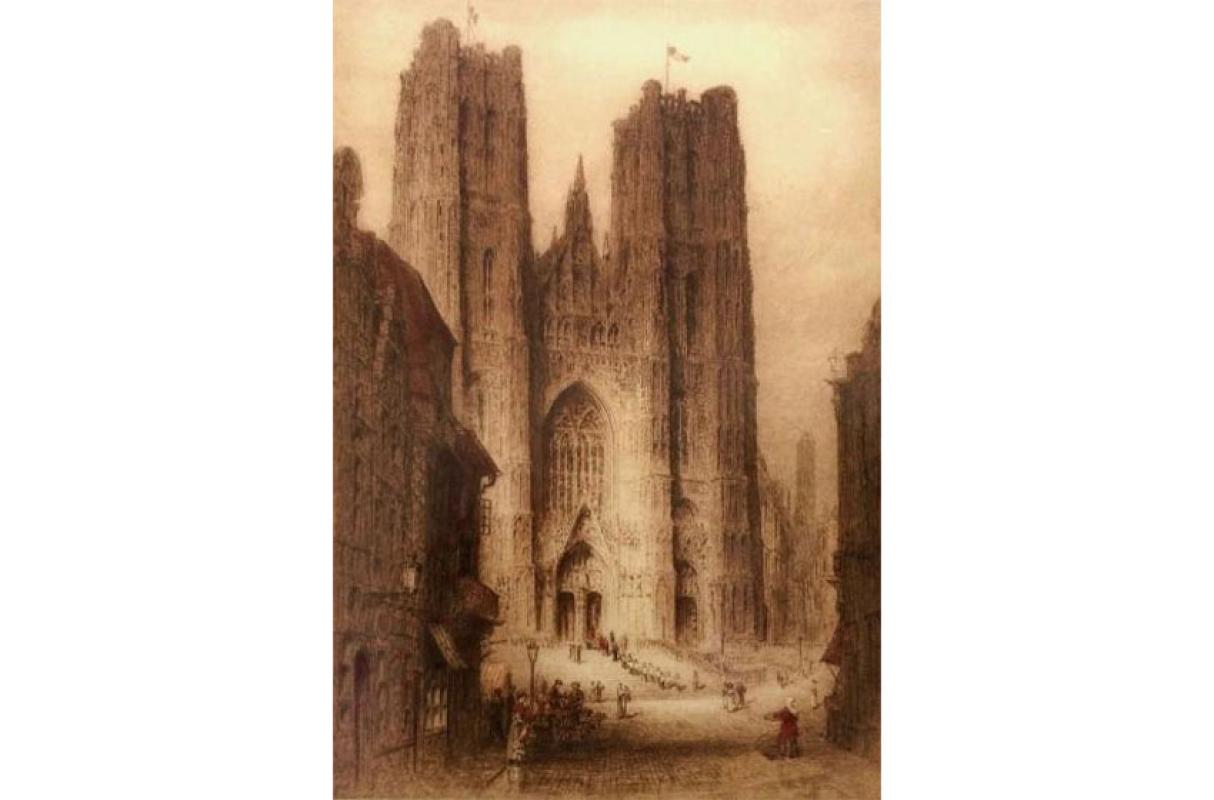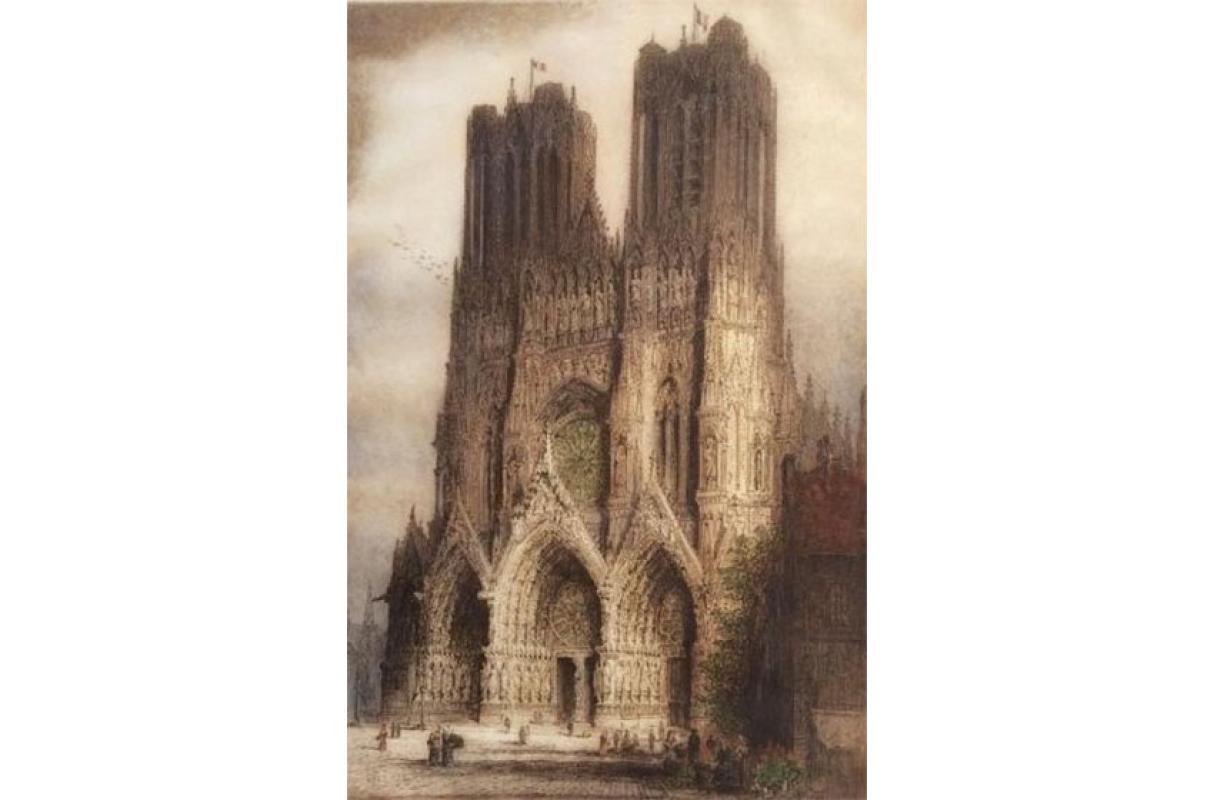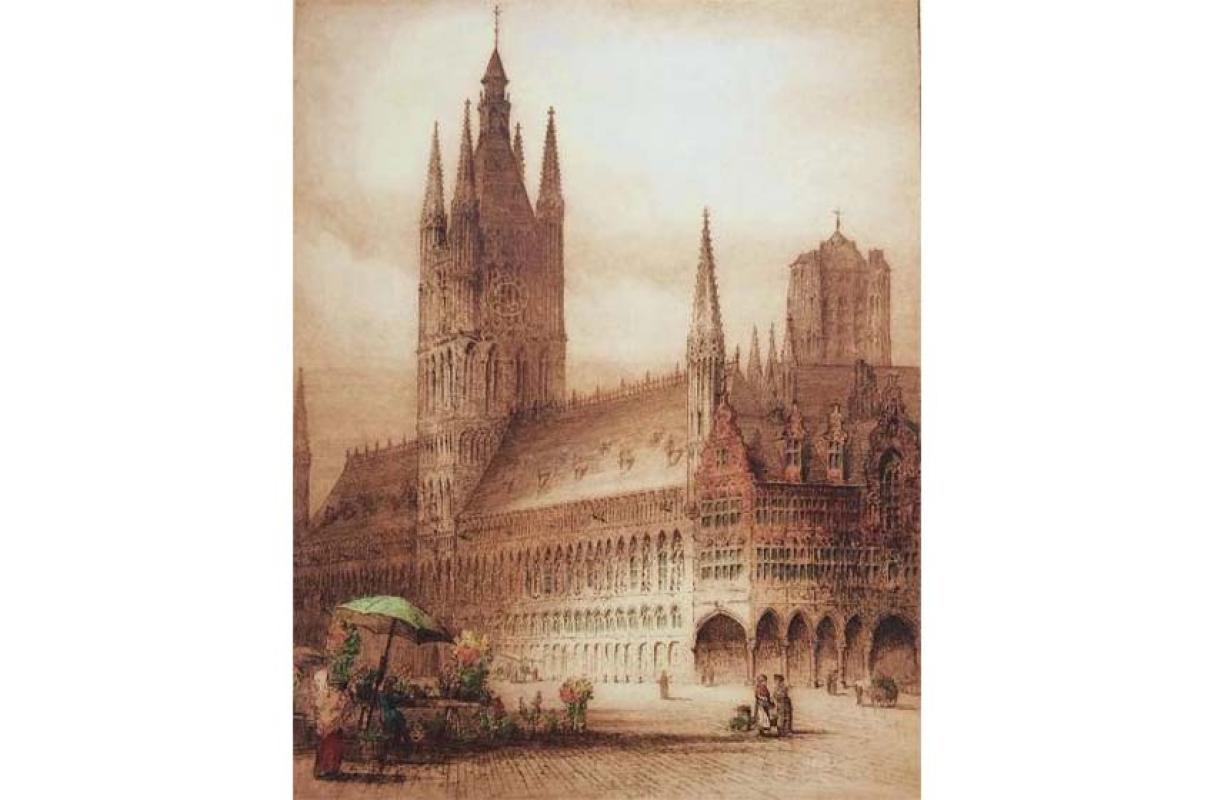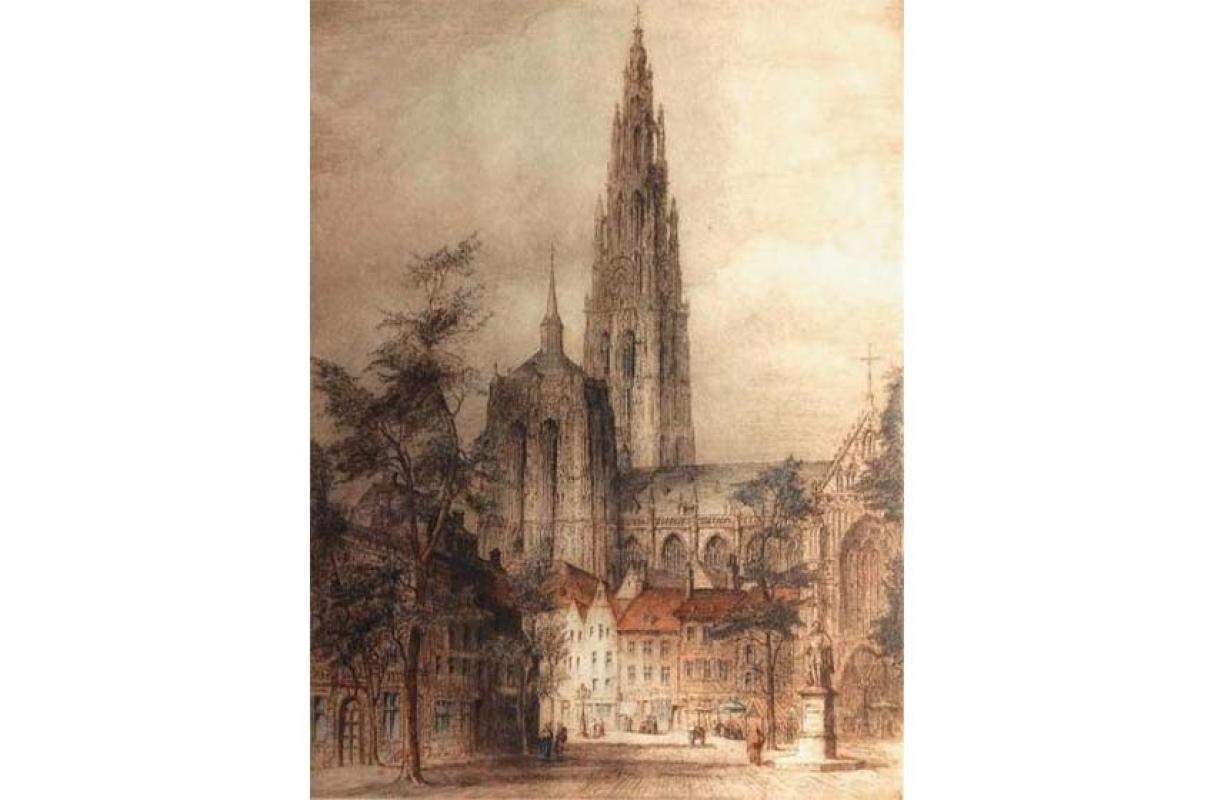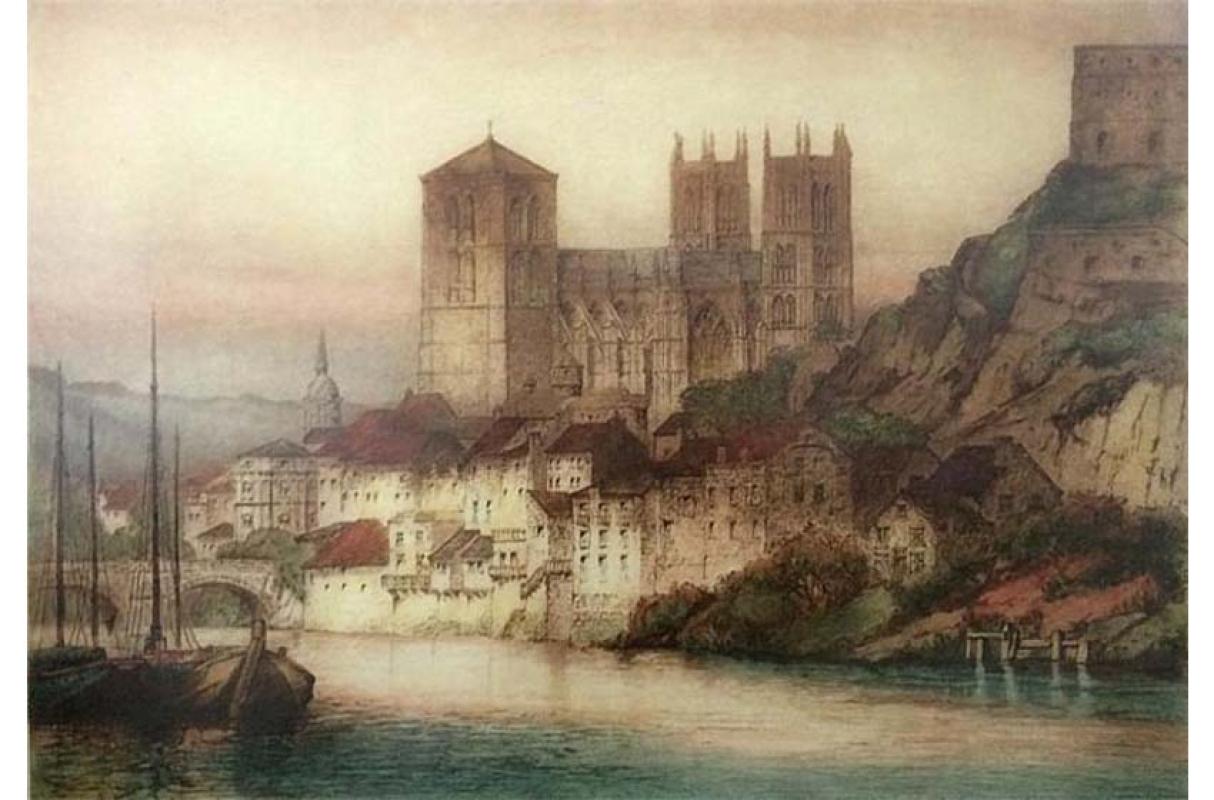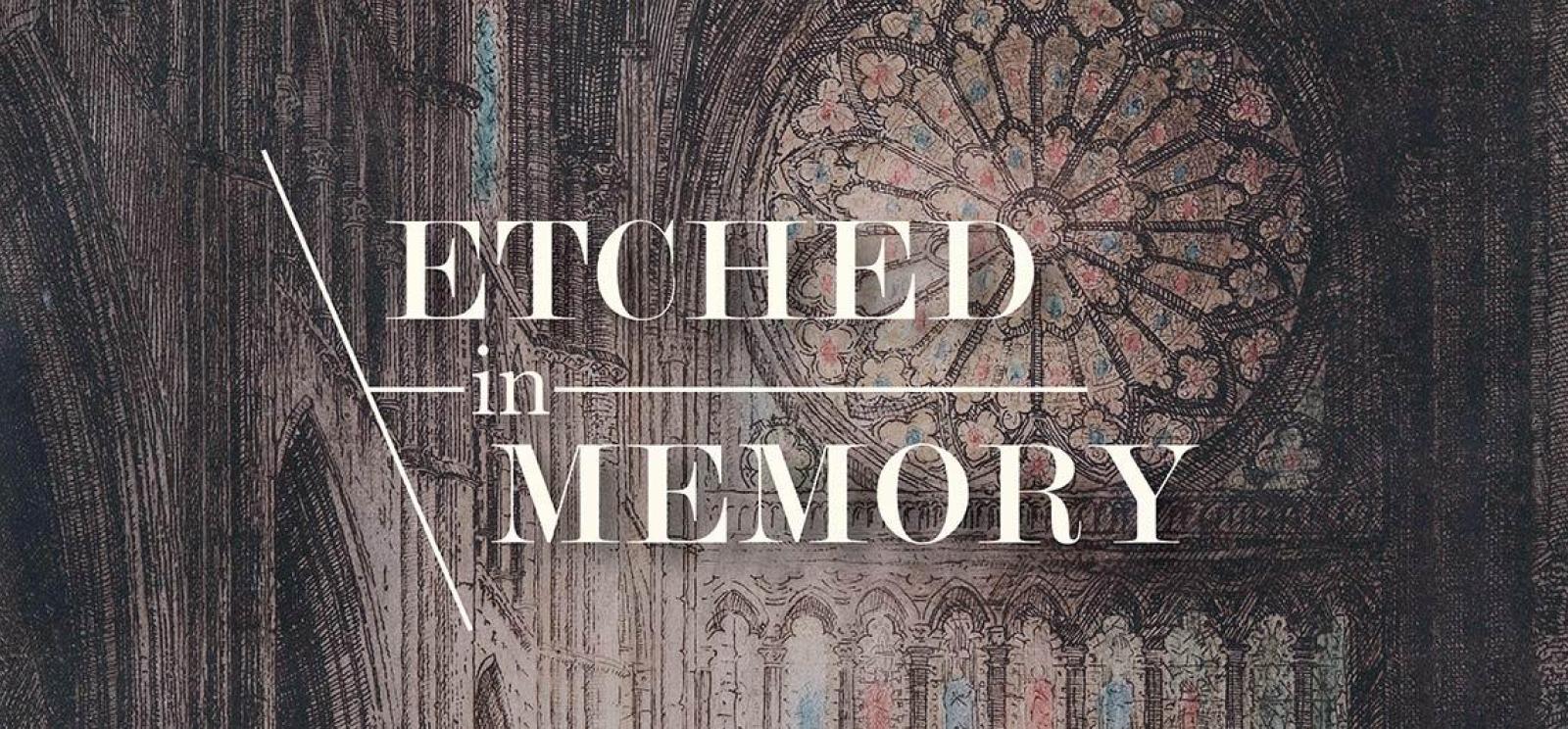
Etched in Memory features color etchings by British artist James Alphege Brewer (1881-1946) presenting scenes from Belgium and Northern France—cathedrals, churches and town buildings threatened or damaged during the battles of World War I. In both the United States and Great Britain, these etchings were proudly hung on parlor walls in solidarity with the Allied cause and as a remembrance of the devastating cultural losses inflicted by the onslaught of war.
Born on July 24, 1881, Brewer was the son of Henry W. Brewer, artist and prominent convert to the Catholic Church, and the grandson of John Sherren Brewer, Jr., the editor of the Calendar of Letters of Henry VIII. He attended St. Charles Catholic College in Kensington before studying at the Westminster School of Art.
Brewer's etchings began to appear shortly after he married into the artistic Lucas family in 1910. Like many artists whose work supported family members, Brewer paid close attention to identifying subjects that would sell. This explains the many Continental cathedral exteriors and interiors—Milan, Rouen, Amiens, Toledo, Antwerp—as well as multiple views of various colleges at Oxford and Cambridge and other scenes of interest to tourists and readers of literature, including a large, atmospheric “Where Shakespeare Sleeps,” a view of Stratford-on-Avon signed by both James and his brother Henry.
Brewer’s most prolific year was 1915, when Alfred Bell & Co. published 13 of his etchings, 11 of them scenes of places that had been destroyed or were in danger from the events of the war. These views could have been sketched or photographed before the war using guidance from newspaper articles speculating about the course of a German invasion of Belgium. As a group, Brewer’s early war etchings argue for his inclusion in surveys of important and influential political art.
This exhibition is on loan from and curated by Benjamin S. Dunham. For more information on the works of James Alphege Brewer, please visit jalphegebrewer.info. Support for the exhibition was provided by the Francis Family Foundation.
